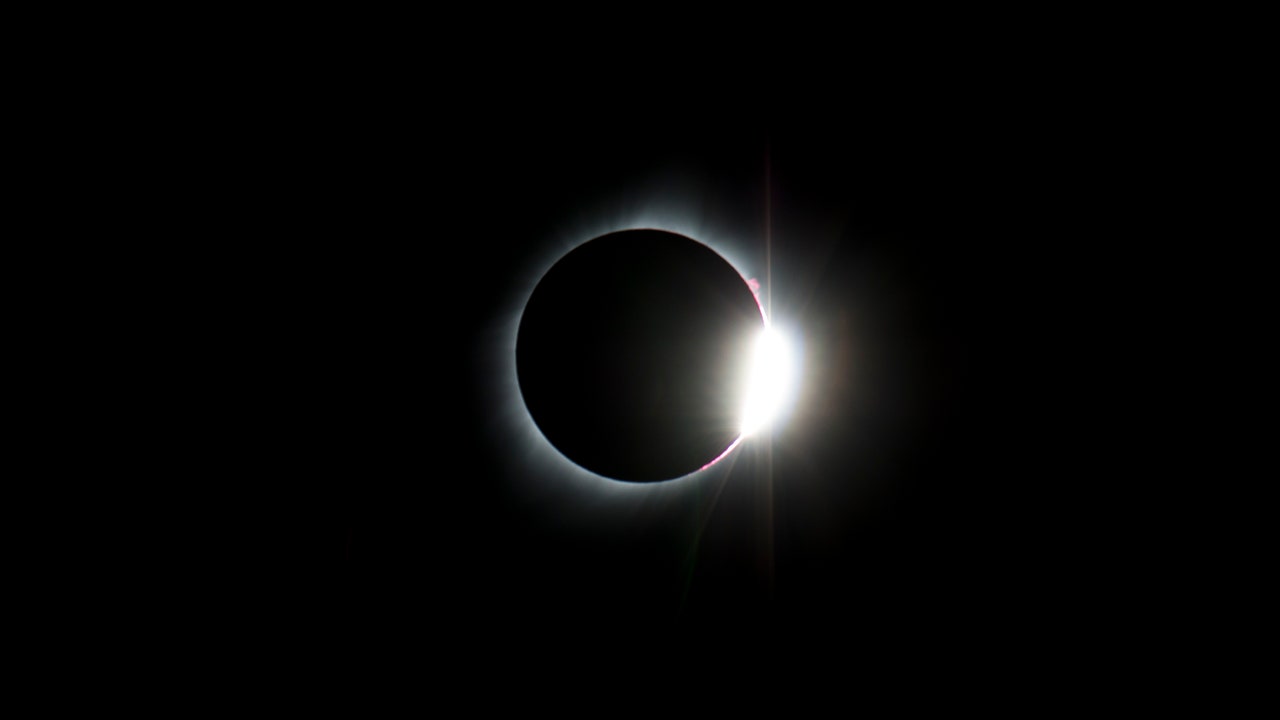If you’re a fan of astronomy or otherwise interested in unique natural phenomenons, you may be wondering where to see the solar eclipse today—or if the big event will be visible from your home. Today, a number of cities throughout Mexico, the United States, and Canada will experience brief moments of dawn- or dusk-like darkness right in the middle of the day. Officially described as a total solar eclipse, the occurrence happens when the moon passes between the sun and the Earth and blocks the entirety of sun’s face.
Because it’s not something that happens everyday, the marvel has been prompting locals and travelers alike to scope out the best viewing locations, but fear not if you don’t have your spot figured out yet. Todays’s eclipse will travel along a wide, densely populated path. NASA estimated that 31.6 million people live in an area that will see the total solar eclipse and another 150 million are within 200 miles of it. What’s more, there won’t be another total solar eclipse visible from the contiguous United States until 2044, according to NASA, making it all the more important to catch this one.
For most of the United States, the eclipse won’t happen until the afternoon, meaning there’s still time to figure out how you’ll watch it. Here, AD covers everything you need to know about the upcoming event, including the 13 best cities to see the eclipse.
What is a total solar eclipse?
There are a number of different types of eclipses, which offer different views of either the sun or moon. As NASA explains it, “A solar eclipse happens when the moon passes between the sun and Earth, casting a shadow on Earth that either fully or partially blocks the sun’s light in some areas.” A total solar eclipse means the moon will completely block the sun’s face, and if you’re in the path of the eclipse, you’ll be able to see the sun’s corona and outer atmosphere, weather permitting. Other types of eclipses, like a partial solar eclipse, occur when the moon covers only some of the sun, resulting in a crescent shape.
How do you safely watch the total solar eclipse?
Not only are solar eclipses special because of their relative rarity, they’re unique in how they’re watched. For the few minutes when the moon is fully blocking the sun—know as totality—viewers can look directly at the sun without any eye protection. Any other time, including the hours before and after totality when you’ll see a partial eclipse, it’s important to wear protective eye gear, such as solar eclipse glasses. “As soon as you see even a little bit of the bright sun reappear after totality, immediately put your eclipse glasses back on or use a handheld solar viewer to look at the sun,” NASA explains.
How often do solar eclipses happen?
Solar eclipses, of one kind or another, happen between two and five times a year. Total eclipses happen about once every 18 months. However, this doesn’t mean one will be visible from your home this often. According to the Natural History Museum, London, a total solar eclipse is viewable from any one place about once every 400 years. For example, the last total solar eclipse visible from the United States happened in 2017 and followed a track from Oregon towards South Carolina. This year, the solar eclipse’s path will start in Texas and move northeast towards Maine. The next total solar eclipse will happen in 2026 and will be visible from the Arctic, Greenland, Iceland, and northern Spain.
How long will the 2024 solar eclipse last?
Total solar eclipses can last anywhere from a few seconds to several minutes. The difference in totality length has to do with how far apart the sun, moon, and Earth are at any given time, since the latter two bodies both orbit in elliptical paths.
When the Earth is furthest from the sun—making the star appear smaller—and the moon is closest to the Earth—which makes the moon look big—totality can last for over seven minutes. As Astronomy Mag reports, these circumstances will line up in about 160 years, when a solar eclipse on July 16, 2186, will see almost seven-and-a-half minutes of totality. On the other extreme, if the Earth is at its closest point to the sun and the moon is at its furthest point from Earth, humans won’t see a total solar eclipse, even if all of the celestial bodies are in line. Since totality is all about the perspective of the viewer, this is also why each city will experience the 2024 eclipse differently.









